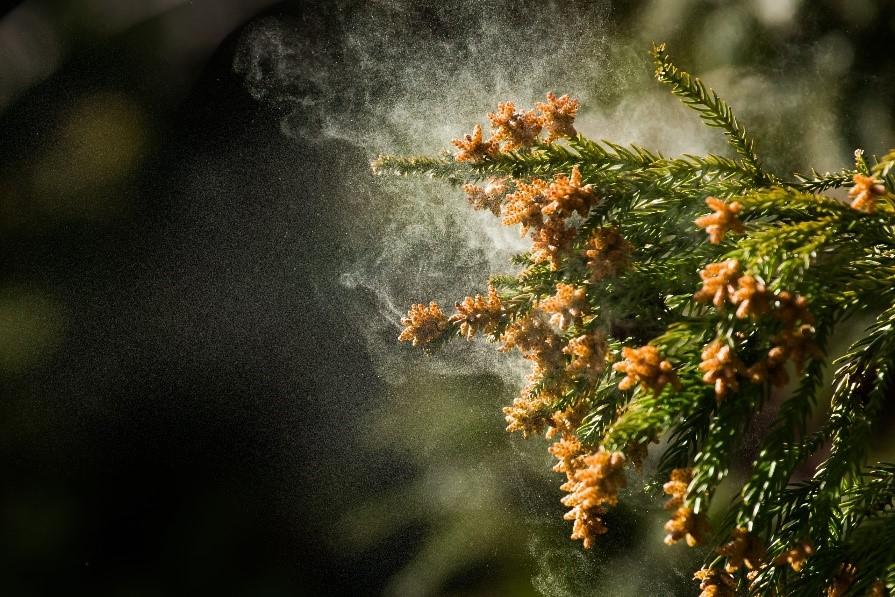Plants from the group of gymnosperms, which include coniferous trees, do not have flowers and fruits in the generally accepted sense. Their seeds are located openly or hidden under scales. The “inflorescences” of conifers are similar in appearance to cones. Once a year the forest is magically transformed. The flowering of spruce, according to eyewitnesses, is a very impressive natural phenomenon.

In case of abundant flowering, the spruce looks elegant, it seems that the tree glows with yellow and scarlet lights
Norway spruce flowering time
In the first ten years, conifers grow extremely slowly. The period of formation of spruce takes 20-30 years. Flowering begins when the plant matures. The phenomenon occurs in the spring, in the second half of May.
How spruce blooms
In botany, conifer cones are modified shoots whose foliage has been transformed into scales. There are two types of “flowers”: female and male.” They are very different in appearance.
- Flowering cones of spruce are considered female. Miniature formations, comparable in size to a hazelnut, have a rich pink or crimson color. Later, the cones become bright red, and finally, when fully ripe, change color to lilac-crimson.The process takes approximately two weeks. Then the cones lengthen and acquire a light green color, finally becoming the usual brown. Female inflorescences are formed at the ends of the shoots and, as a rule, are directed upwards. Less commonly, the cone is placed at an angle. This arrangement of fruits is observed if the branch itself is tilted.
- Male yellow “flowers” are smaller in size - they can be compared in size to peas. The fruits have the shape of elongated earrings. Male cones produce pollen, which is also shed in May. Gusts of wind carry small particles around. Moreover, pollen scatters over considerable distances. Male inflorescences are also located at the tips of the branches, but not on those shoots where the female ones are located.
Seeds develop under the scales of the cones. After some time they are ready for pollination. An external sign of the beginning of the process is that the scales are moving apart. At the end of pollination, the cone “closes”, so that pests cannot penetrate inside. The seeds are sealed with scales until February. With the beginning of the spring season, they, once on the snow crust, and then in the soil, begin their life cycle - the germination and development of new coniferous trees.
Blue spruce blooms a little differently. Pink or red cones similar to strawberries form on the branches.

Ripe elongated fruits acquire a light brown tint

In the spring forest you can see clouds of yellow pollen rising above the treetops
How to see a blooming spruce
Even from the photo it is clear how beautifully the spruce blooms in spring. This spectacle looks even more impressive in reality.Few city dwellers witness the miraculous transformation of gymnosperms. You can admire the view of a flowering coniferous tree in the wilderness. The cones are mainly concentrated at the top of the spruce.
Conclusion
Spruce flowering is a short process, but impressive. By mid-autumn, the seeds in the cones ripen, becoming part of the diet of forest dwellers. At the end of winter, light lionfish glide onto the snow. From seeds placed in favorable conditions, a young spruce forest grows.








